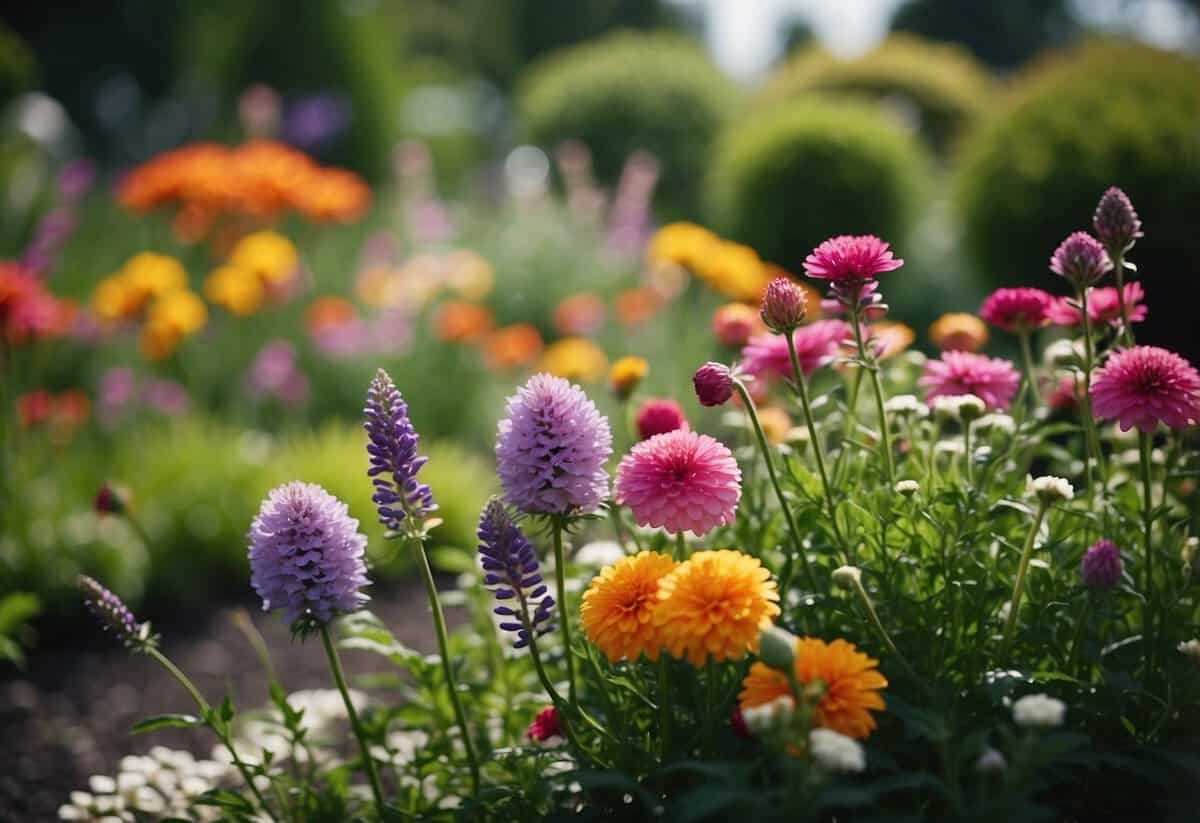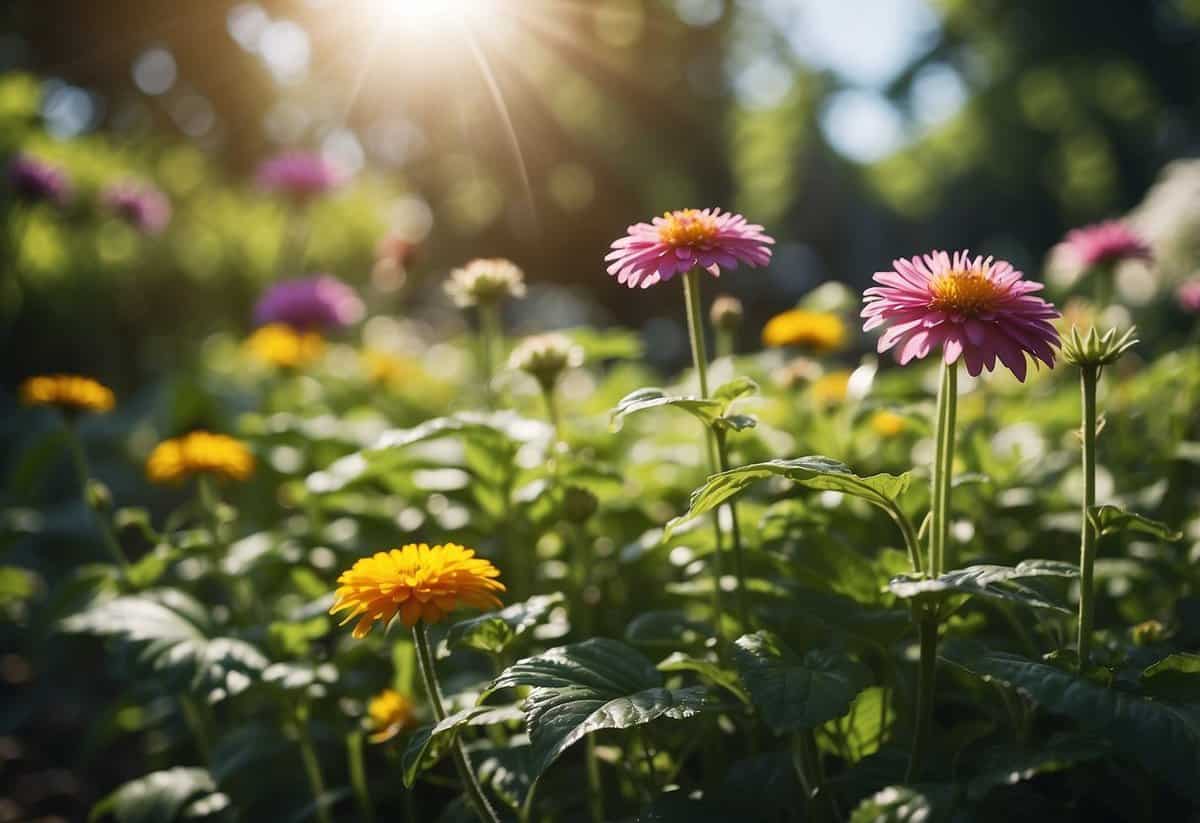Perennial Garden Tips: Easy Ways to Keep Your Garden Blooming Year After Year
Creating a perennial garden can bring color and life to your yard year after year. These plants, which regrow every spring, offer a long-term and sustainable solution for garden enthusiasts. Whether you’re an experienced gardener or just starting out, having a mix of perennials can reduce the need for replanting and provide consistent beauty.

What are the key tips to ensure your perennial garden thrives season after season? Knowing how to plant, care for, and maintain perennials can make a big difference in the health and appearance of your garden. This guide will help you with essential tips to create a vibrant and flourishing perennial garden.
1) Choose native perennials

Choosing native perennials for your garden is a great way to ensure that your plants thrive. Native perennials are more resistant to local pests and diseases. This means you spend less time and money on maintenance.
Plants like Amsonia hubrichtii and Black-eyed Susan are perfect examples. They adapt well to local soil and climate conditions.
Native perennials also support local wildlife, providing food and shelter. You can enjoy a beautiful, low-maintenance garden while helping the environment!
2) Plant in groups

Grouping your perennials helps create a fuller and more vibrant look in your garden. When you plant in clusters, it makes a strong visual impact and helps the plants support each other.
By planting in groups, you can make maintenance easier. It’s simpler to water, mulch, and care for a cluster of plants rather than single ones. Plus, grouped plants often share similar needs, making it easier for you to tend to them. For more detailed guidance, check out this perennial planting guide.
3) Use well-drained soil

Well-drained soil is crucial for a perennial garden. It prevents water from pooling around the roots, reducing the risk of root rot.
Check your soil’s drainage by digging a hole and filling it with water. If it drains within a day, it’s good.
You can improve drainage by mixing coarse sand or compost into your soil. Need more tips? Learn how to create well-drained soil.
4) Water Deeply but Infrequently

Watering your perennial garden deeply and infrequently is key to healthy plants. Deep watering encourages roots to grow downwards, making them more resilient during dry spells.
Instead of watering daily, aim for once or twice a week. This allows the soil to stay moist several inches below the surface. You can learn more about deep watering at The Spruce. This practice helps your plants access water stored deeper in the ground, boosting their overall health.
5) Add compost annually

Adding compost to your perennial garden each year can make a big difference. It improves soil structure and provides vital nutrients.
In fall, you can mix compost into the soil or use it as mulch. This not only helps your plants but also keeps the soil healthy.
In spring, apply a thin layer over your lawn to boost grass growth. Make sure to aerate the lawn first for the best results.
For best results, check out more details from Gardening Know How.
6) Mulch to Retain Moisture

Mulching your perennial garden helps keep moisture in the soil. This is important because it means you don’t have to water as often.
You should add a 2-3 inch layer of mulch. Thicker layers might harm your plants. Make sure to place the mulch around your plants like a donut, not a volcano.
Using materials like shredded wood, straw, or leaves can be very effective. Proper mulching not only helps with moisture retention but also keeps your garden looking neat and tidy. For more tips, check out this guide to mulching.
7) Deadhead spent flowers

Removing dead flowers, or deadheading, helps keep your garden blooming. Cut below the wilted bloom and above the next pair of leaves. This encourages new growth.
For tougher stems, use garden pruners. You can discard the dead parts or add them to your compost pile. Deadheading regularly keeps your plants looking their best and can extend their blooming period. For more details, check out these deadheading tips.
8) Divide Crowded Plants

If your perennials are packed tightly together, it’s time to give them some space. Crowded plants compete for nutrients and water, which can affect their growth.
Choose a time in the fall or spring to divide your plants. This timing helps the roots establish before extreme weather hits.
Dig around the rootball using a sharp spade. Gently lift the clump out of the soil. Then, pull the clump apart by hand or use two garden forks.
Replant the smaller sections in new spots. This will help them grow vigorously and produce healthier blooms. For more detailed steps, visit Almanac.
9) Stake Tall Perennials

Staking tall perennials helps keep them upright and looking neat.
Use materials like bamboo stakes or even chicken wire.
Place stakes early in the season before the plants grow too tall.
For more tips, you can check out Better Homes & Gardens’ guide. Keep an eye on your plants to ensure the ties aren’t too tight.
Happy gardening!
10) Control pests naturally

Keeping pests away from your perennial garden can be simple. First, maintain a clean garden by removing dead plants and leafy debris. This helps prevent insects from hiding.
Next, you can try using food-grade diatomaceous earth. Sprinkle it around plants to act as a barrier against crawling pests.
Planting certain flowers and herbs can help too. For example, grow marigolds or lavender to repel mosquitoes and other bugs naturally.
Benefits of a Perennial Garden

Perennial gardens offer great advantages, including saving money over time and requiring less maintenance.
Cost-Effective Landscaping
Perennials are a smart investment for gardeners. While the initial cost might be higher than annuals, perennials grow back every year. This reduces the need to buy new plants each spring.
Over time, you spend less on plants and more on enjoying your garden. Some perennials, like cone flowers and salvias, thrive for many years, giving you long-lasting beauty with little expense.
Additionally, perennials can be divided and replanted, creating more plants without extra cost. This helps expand your garden’s variety and coverage. Investing in hardy perennials like asters and Monardas can provide vibrant colors and textures for many seasons.
Low Maintenance
Perennial gardens require less upkeep than annual gardens. Once established, perennials are generally hardier and can withstand varying weather conditions better.
These plants often need less water and fertilizer, making them easier to care for. Choosing the right perennials, like lupines and columbines, ensures a beautiful garden with minimal effort.
Furthermore, perennials tend to have deeper root systems. This means they can access water from deeper soil layers, reducing the need for frequent watering. This not only saves time but also conserves water.
By selecting perennials suited to your local climate and soil, you create a self-sustaining garden that thrives with less intervention.
Designing Your Perennial Garden

Designing a perennial garden involves selecting the right plants, planning their placement, and considering color and texture. These steps will help you create a beautiful and harmonious garden space.
Choosing the Right Plants
First, think about your garden’s climate and soil. You need plants that thrive in your local conditions. Test your soil’s pH and nutrient levels. Remember, some perennials prefer acidic soil, while others do better in alkaline conditions.
Next, check the hardiness zones on plant labels. Choose perennials that match your zone for the best chances of success. For example, salvias, lavenders, and Veronicastrums are generally hardier and long-lived.
Additionally, consider the bloom time. Some plants, like daylilies, bloom in summer, while others, like asters, flower in fall. This way, you can ensure that your garden has flowers throughout the growing season.
Creating a Planting Plan
Making a planting plan helps you organize where each plant will go. Start by sketching a rough layout of your garden. Think about the size and growth habits of each plant. Tall plants like ornamental grasses should go in the back, while shorter plants can go in the front.
Group plants with similar water and sunlight needs together. This makes it easier to care for them and ensures they all get what they need to thrive. Consider spacing as well. Overcrowding can lead to competition for resources and hinder plant growth.
You may want to leave some room for annuals or biennials that can provide seasonal color or fill gaps as needed. This flexibility helps maintain visual interest throughout the year.
Considerations for Color and Texture
A successful garden isn’t just about having flowers; it’s about creating visual interest through color and texture. Use a mix of leaf types, from broad and glossy to fine and feathery, to add depth to your garden’s appearance.
When it comes to color, think about the color wheel. Complementary colors, like purple and yellow, stand out against each other. Monochromatic schemes, using various shades of one color, can also be very pleasing.
Consider the textures of your plants. Mix plants with different leaf shapes and sizes. For example, large-leaved hostas can look striking next to the fine leaves of ferns. You can also incorporate items like ornamental grasses for added texture and movement.
By thoughtfully planning the plants, layout, and visual elements, you can design a perennial garden that is both beautiful and easy to maintain.
Caring for Your Perennials

Caring for perennial plants involves regular watering, appropriate fertilizing, and timely pruning. These steps help ensure that your garden remains vibrant and healthy throughout the growing season.
Watering Tips
Perennials need consistent watering, especially during dry spells. Aim for about 1 inch of water per week. Check the soil moisture by sticking your finger about an inch into the soil. If it feels dry, it’s time to water.
Water early in the morning to help reduce evaporation and prevent fungal diseases. Use soaker hoses or drip irrigation to direct water to the root zone, reducing water wastage and keeping the foliage dry. Mulching around plants helps retain soil moisture and keep roots cool.
Fertilizing Strategies
Feeding perennials keeps them healthy and promotes flowering. A slow-release granular fertilizer in early spring provides essential nutrients throughout the season.
Organic options like compost or worm castings improve soil health and encourage root development. Apply a balanced fertilizer (10-10-10) mid-season if your plants show signs of nutrient deficiency, such as pale leaves or stunted growth.
Avoid over-fertilizing, as it can lead to lush foliage with fewer blooms. Always follow the product’s instructions for the best results.
Pruning and Deadheading
Pruning and deadheading help maintain plant health and appearance. Remove spent flowers regularly to encourage more blooms and prevent plants from going to seed.
Cut back perennials after their flowering period to tidy up the garden and promote a second flush of flowers in some varieties.
Throughout the season, remove any dead or damaged stems to prevent disease. In late fall, cut back the foliage of herbaceous perennials down to a few inches above the ground, which prepares them for the winter and reduces the risk of pests.







